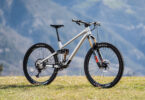To ride your bike without an annoying backpack yet knowing that you’ve got the most important tools with you might sound like a dream, but it can be reality. It’s made possible by brands such as Wolf Tooth Components, OneUp Components, Syncros, Bontrager, Specialized, Granite, Backcountry Research and many more. We’ll tell you what to look for when storing tools on your bike and show you the best solutions available.
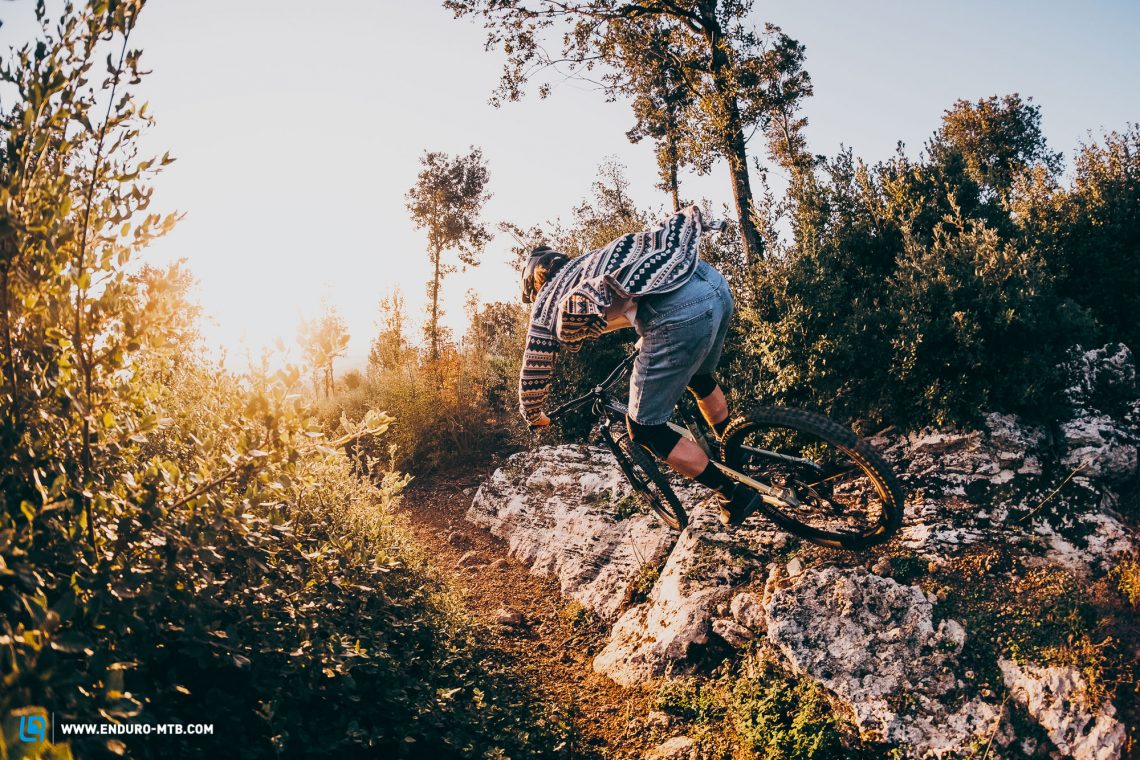
No sweaty back, no annoying movement, no back pain or simply that feeling of the wind flowing through your shirt – there are many reasons to ride without a backpack. For some, hip bags like the ones you will find in our XXL group test present the ultimate solution. For everyone else who wants to ride without having to carry a bag, we’ve created this guide. It makes sense to stow your tools on the bike even if you’re still going to use a backpack for long rides. After all, that way you’ll always have the tools you need within easy reach and less weight on your back. So, it’ll definitely be worthwhile to keep on reading!
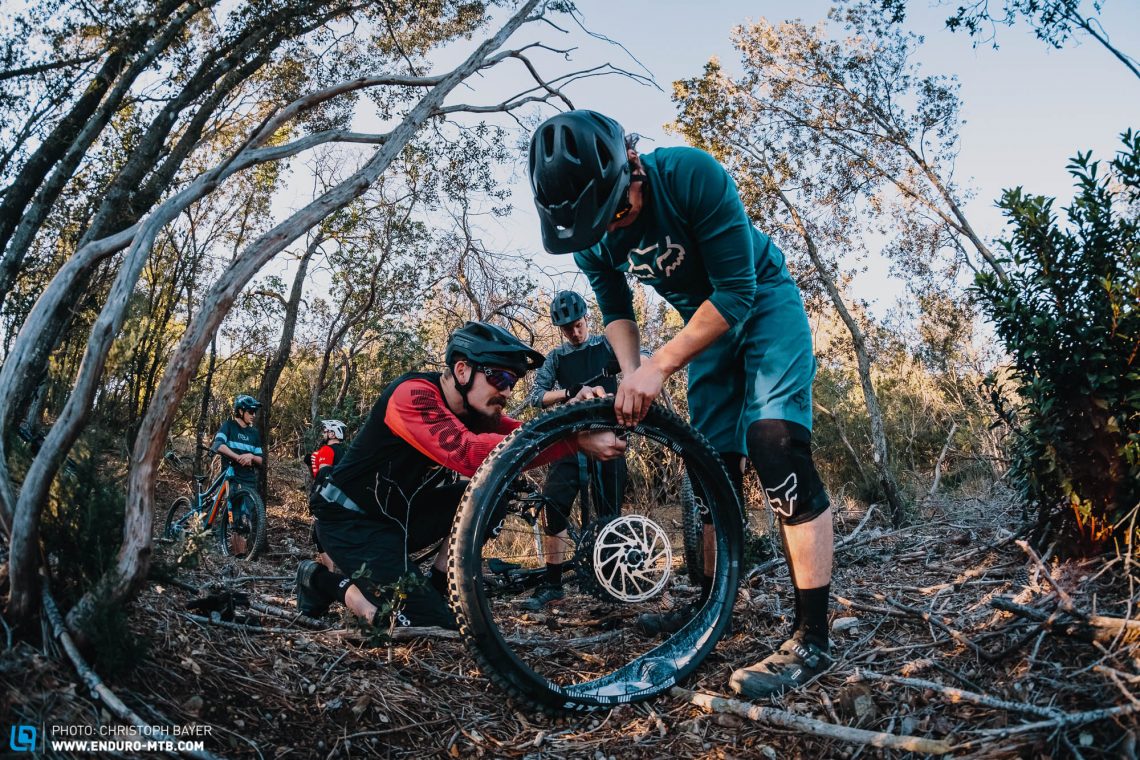
What to expect in this guide
What are the essential tools to take on a ride? Where can I attach them to my bike? Which brands cater to this and what solutions are there? Which is the best solution and which ones suit my riding style and bike? We answer these questions, giving you our personal favourites and other useful tips.
Where to attach tools and spares on your bike
Admittedly, very few bikes have a “trunk”. The best known models are the Specialized Enduro, Stumpjumper and Stumpy Evo, as well as the Trek Fuel EX and Slash and the LAST TARVO. Owners of these bikes can count themselves lucky, easily able to stow most of the required tools and a spare tube in the bike. Nevertheless, we’ve still got some practical tips for Trek and Specialized riders.
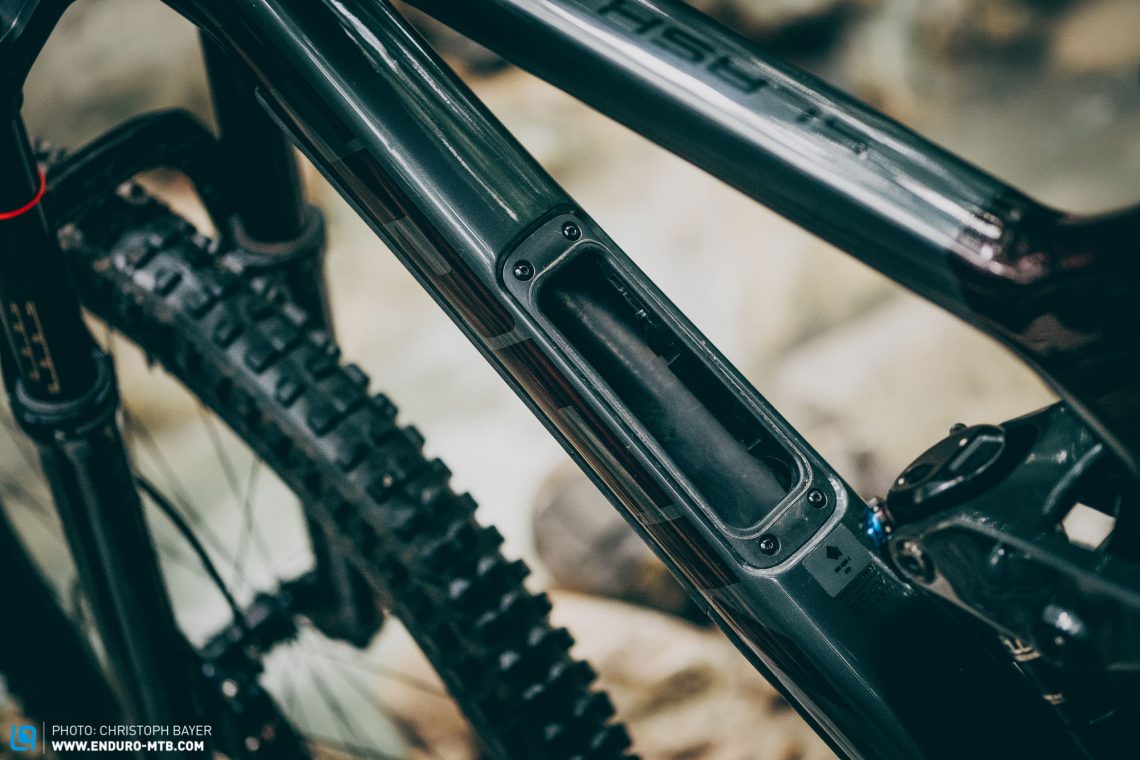


Everyone else will have to get creative or use the solutions presented here. In general, you have to make use of the cavities on your bike. The steerer tube, the handlebar ends or the axle of your cranks, you’ll find tools designed to be stored in all of these places. Increasingly, frame manufacturers, including Norco, Trek, RAAW, Nukeproof, YT and Canyon, are designing their frames with additional bosses on the top tube to attach a small bag or base plate for a spare tube and other necessities. Alternatively, you could just use a strap or gaffer tape to attach a tube, CO2 cartridge or other tools anywhere on the bike. The trusty old bottle cage has also evolved and can now be used to carry much more than just water, including solutions with integrated tools.
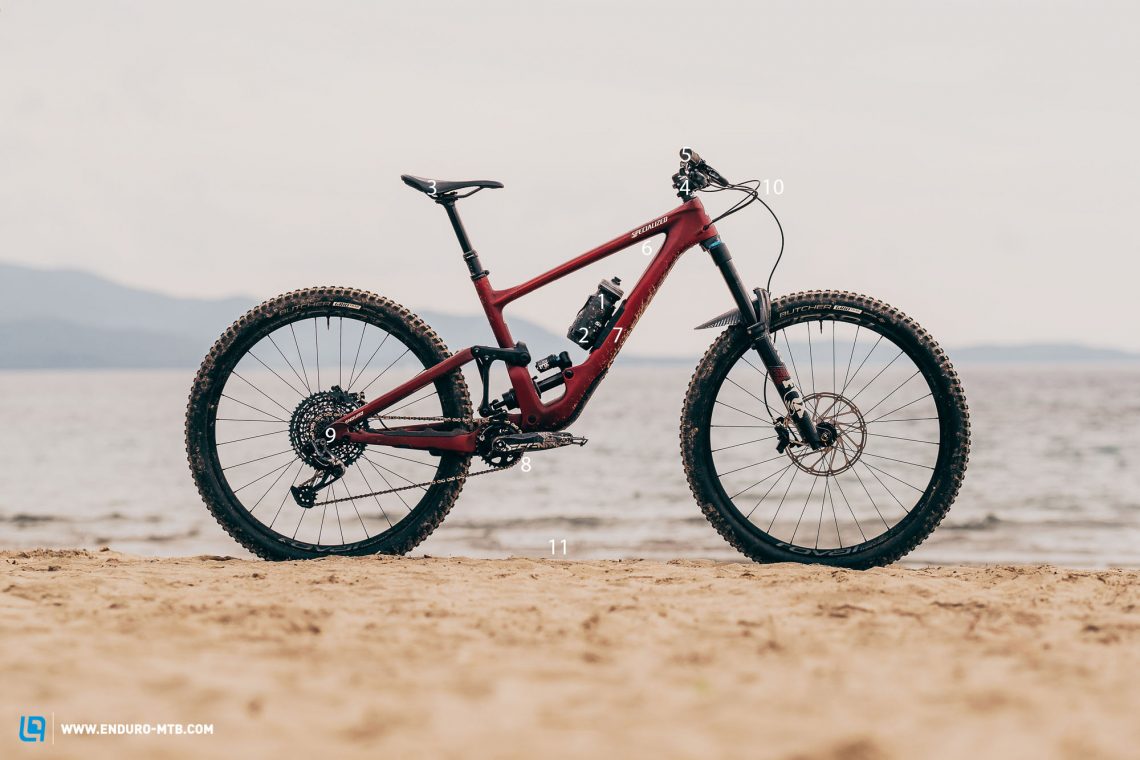
Below is a list of the potential on-bike attachment and storage locations
- Bottle cages: many models are now available with integrated tools.
- In the bottle: these classic road tool boxes are still very popular, but then you’ve got no water.
- Under the saddle: the saddlebag is a classic, meanwhile you also get open versions, unfortunately they’re in direct line of fire from the rear wheel.
- Steerer tube: we’re seeing more and more tools designed to go inside the steerer tube, from above and below.
- Handlebar ends: quite a few tools and especially tire plugs can be stowed in the handlebar ends.
- Top or down tube: perfect for a spare tube attached with a strap, gaffer tape or via integrated bosses.
- Trunk in the frame: Specialized, Trek and LAST now offer storage space inside the frame.
- Crank axle: you even get tools designed to be stored in the hollow of the crank axle.
- Rear wheel axle: there isn’t much room here, but enough for an Allen key.
- Cockpit cables: a classic master link storage option
- Trouser pocket: ideal for a smartphone and, if necessary, flat multi-tools (never put your tools and smartphone in the same pocket!)
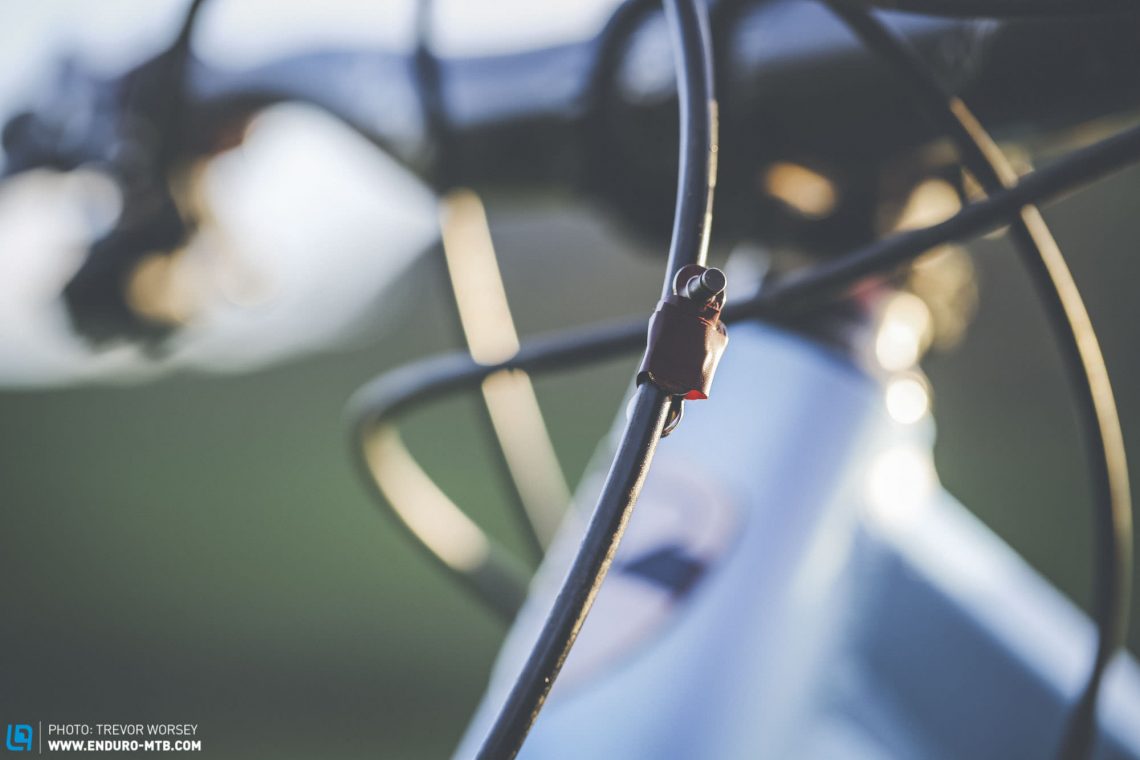
What to look for when attaching tools, tubes and other spares to your bike
It shouldn’t interfere with your riding
When attaching things to your bike, it is critical that they don’t interfere with your riding. As such, you shouldn’t attach anything to the top of the top tube since it restricts your freedom of movement.
You have to retain the bike’s full functionality
Make sure that nothing interferes with the working of the suspension. The rear linkage has to move freely and, of course, nothing should rub or chafe.
It shouldn’t rattle
Annoying rattling or movement is a no-go! For years, the industry has been trying to get bikes quiet, so your master link shouldn’t go flying around in your head tube or a tool rattle in your crank axle.

Consider the manufacturers’ guarantees
Depending on the solution, there may be restrictions on the guarantees of certain components. For example, the classic OneUp EDC tool requires you to cut a thread in the fork’s steerer tube, unless you use OneUp’s special stem. Depending on the brand, doing so will negate the guarantee on the fork.
It has to be compatible
Not all tools are compatible with all components. The older version of the All In multitool doesn’t fit in current SRAM DUB cranks and the Wolf Tooth EnCase Bar-Kit does not fit in every handlebar (particularly carbon handlebars).
Style and looks
It is well known that beauty is in the eye of the beholder, but if you spend a few thousand euros on a bike, you’ll want your tools to be integrated as stylishly as possible. For some, a pump on a bottle cage is a no-go, others simply tape everything to their bike.
Accessibility & speed
How often do you need the tool and how quickly do you want to have it at hand? If your mini-tool is in a strap together with your spare tube, accessing it is a lot bigger of a hassle than if you’ve got it stored separately. Taping things to your bike is the least convenient. Once you’ve unwound the tape to get to whatever it was holding, you’ll have a hard time re-attaching it.

Service life
Do your trail essentials get bombarded with mud and dirt? This will have a negative effect on their function and service life. Pump heads in particular are very sensitive to dirt. If possible, you should try not to puncture your spare tube before using it. Strapping it to the bottom of the down tube isn’t wise. It is much better protected inside the front triangle.
Weight distribution
The lower and more centrally you can stow the tool on your bike, the better the handling. Of course, a few extra grams in the handlebar won’t have a big effect, but it is still worth considering the weight distribution when deciding where to store your tools.
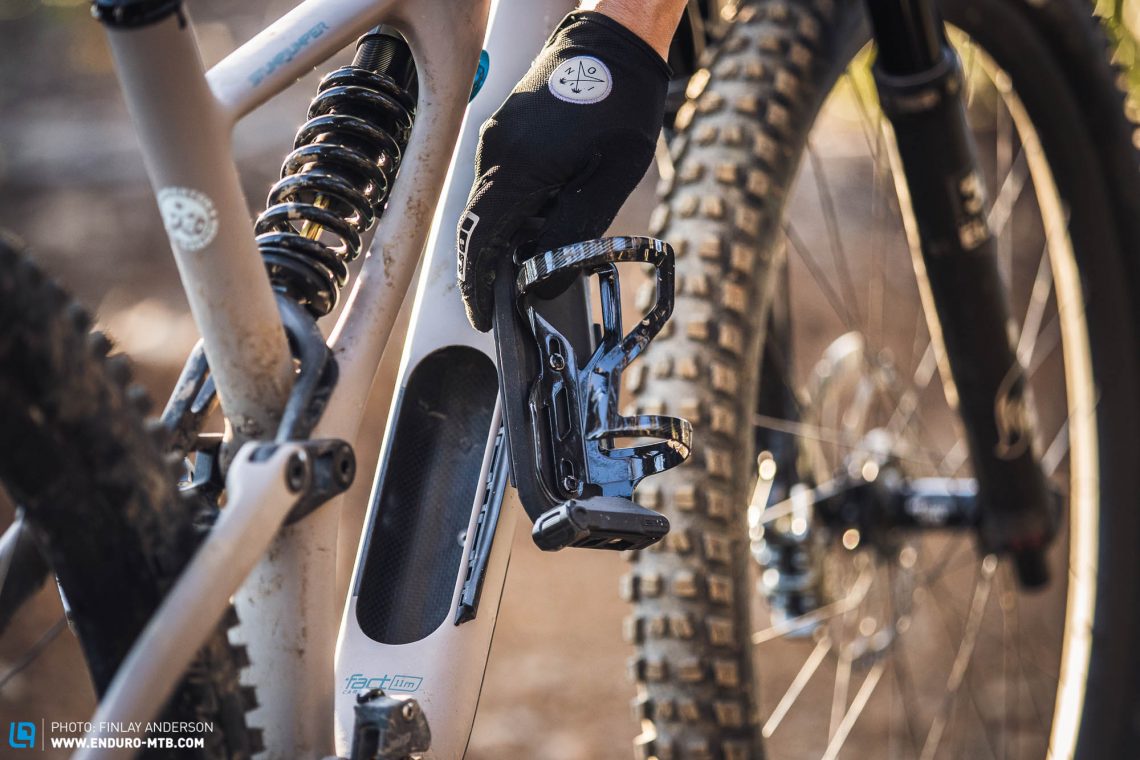
We’ll tell you what to consider with the tools as we look at each of them individually. However, given the vast range of different components, it is impossible to offer a complete list. If in doubt, refer to the respective manufacturer’s website.
What tools do you need on a mountain bike rides?
There are many different scenarios that you might encounter on a bike ride. Of course, if you want to err on the side of caution, you can’t avoid a backpack. You have to weigh up the probabilities of different scenarios to know which ones to prepare for. Below, we’ve listed the most common defects and the tools required to repair them. We’ve written an additional guide full of useful hacks to use in worst case scenarios while out on a ride. In addition to tools, you’ll also need your phone, a snack if necessary, and something to drink, which we’ll get back to in more detail later.

Punctures
The classic among breakdowns. A tubeless setup doesn’t make you immune to punctures as anything from pointy rocks, thorns, or even hitting a berm too hard can lead to air loss. If you can’t fix a puncture, your ride is over and it’s time to hike. You should therefore always carry a pump or two CO2 cartridges, tire plugs and, if necessary, a repair kit for tubes and tires, and a spare tube. We recommend two 25 g CO2 cartridges since you’ll typically use a whole cartridge to refill the tire after installing a plug. If it doesn’t work, you’ll have to put in a tube and you’d be lost without a second cartridge. It’s equally important to note that some sealants aren’t compatible with CO2. If in doubt and you want to carry on riding tubeless, you’ll have to replace the sealant when you get home.
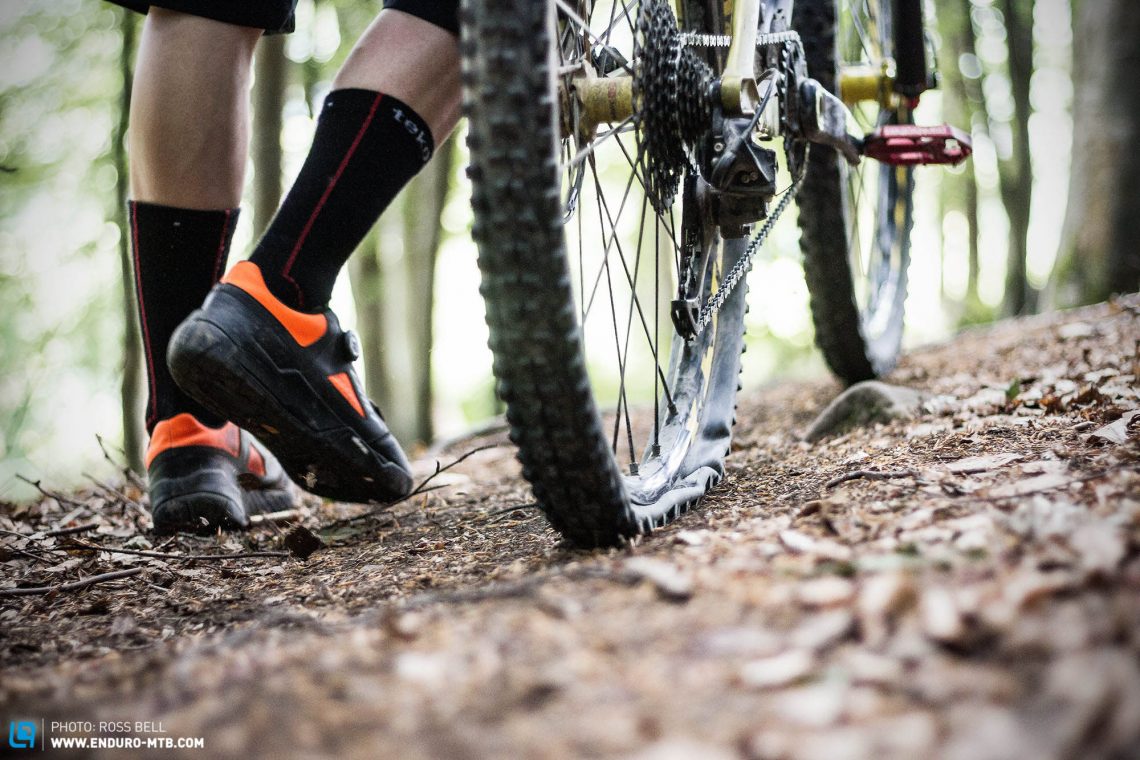
Broken chain
A chain rarely breaks, but when it does, you’ll be lost without tools. What you’ll need is a chain tool and a master link. By the way, a chain seldom breaks without having been damaged beforehand. If you get a branch stuck your chain or if you jam it badly, it’s worthwhile giving it a close inspection and replacing any damaged links. Doing so could prevent breakage at a later point. A poorly adjusted rear derailleur can also be a contributing factor.
Loose bolts
It doesn’t have to happen, but it can: one or more bolts come loose on the rear linkage, your pedals or the rear derailleur. If you spot it in time, tightening them back up is easy. However, you’ll need the right tools, as with every job. Check your bike to see which bolt sizes and types are common and get a multitool that has them all. It is equally important that you can reach all the crucial points – the Allen keys found on minitools are often too short for the rear derailleur.

Broken wheel
As with the chain, broken spokes are a rare occurrence, but you should still be able to re-tension a wheel rudimentarily – no need to bother truing a wheel on the trail. Fortunately, you’ll find the required spoke wrench on almost every tool. Attention: some wheelsets, such as the Mavic Deemax, require special tools that you won’t find on a standard multitool.
Adjusting the gears, brakes or other components
If the derailleur hanger is bent, it’ll be difficult to repair adequately on the trail. However, what you can do is to adjust the drivetrain so that you can still get home. This also requires the right tools.
Here is a list of all the tools and spare parts to carry on every mountain bike ride
- Spare tube (tip: the Tubolito saves a lot of space)
- Tire plugs (for a tubeless setup)
- Pump or two 25 g CO2 cartridges including adapter or a pump and CO2
- Tube repair kit (optional, but recommended)
- Tire levers (ideally with integrated chain link pliers)
- Chain tool
- Master link
- Multitool with all the necessary sizes
- Gaffer tape
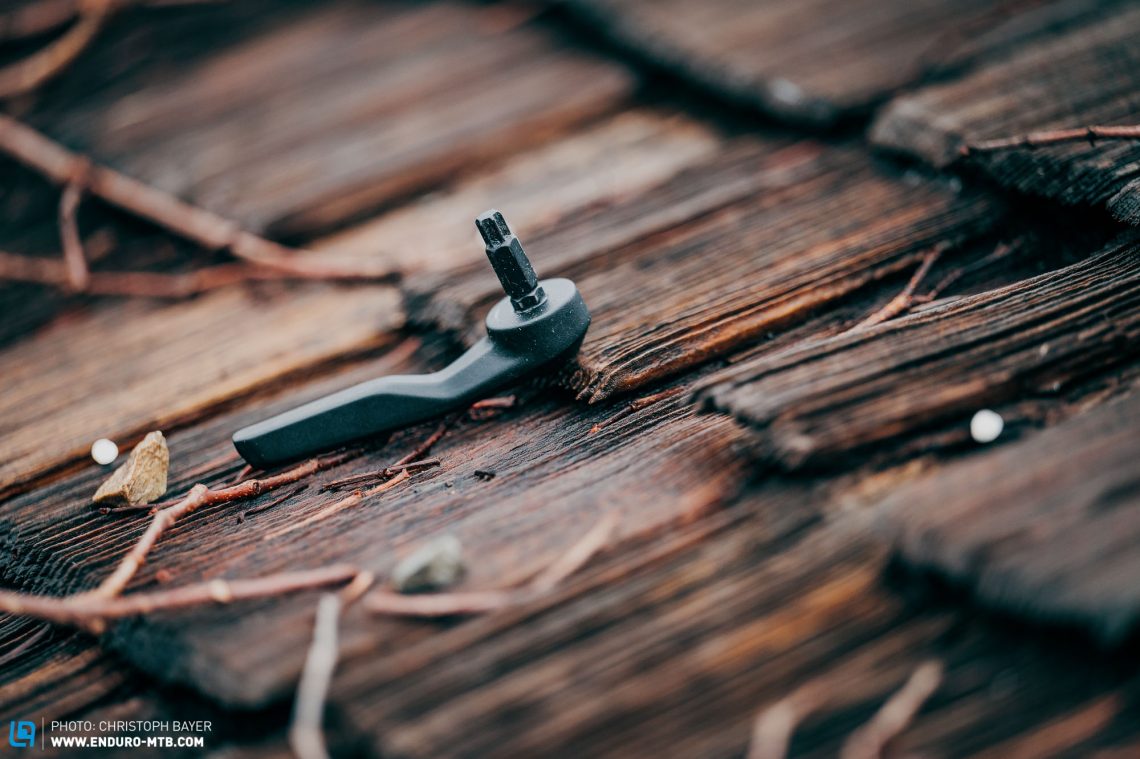
Tools are one thing, but where do you put your food, water and cell phone?
Your ride can come to an abrupt end if you haven’t got food and something to drink. As already mentioned, it’s hard to get around carrying a backpack on long rides. However, careful planning will allow you to go quite far without carrying provisions. Energy bars and snacks can be easily stowed in the pockets of cargo bibs as offered by Specialized, Rapha, Patagonia and many more. Barring that, you’ll be surprised how much you can fit in your trouser pockets, which can be good place to keep your smartphone. Bottle cages are still excellent for carrying water. If your bike doesn’t come with the required bosses, you’ll likely have to resort to using a hib-bag and bladder.

What solutions are there for stowing tools on your bike and which do we recommend?
The market for on-bike storage solutions for tools and spare parts has grown tremendously in recent years. You could simply tape a spare tube to the frame, but why do that when you can get straps that do the same in a much neater, more convenient and sustainable way. Below, we’ve listed all the best brands and products currently available. Once you’ve seen what’s available, we’ll show you our favourite configurations.
OneUp Components – Excellent integration and great pumps
The Canadian brand made a name for themselves years ago with their EDC tool that can be stowed in the steerer tube. However, you either had to cut a thread in the steerer tube or use the OneUp stem. Alternatively, the tool can also be stowed in OneUp’s mini-pumps. The new EDC Lite fits into the head tube without the need for a special stem or cutting a thread, but it doesn’t have the same range of tools either. In addition to the tools, the Canadian brand’s pumps are great too. However, their straps are somewhat rudimentary – you’ll find better alternatives.
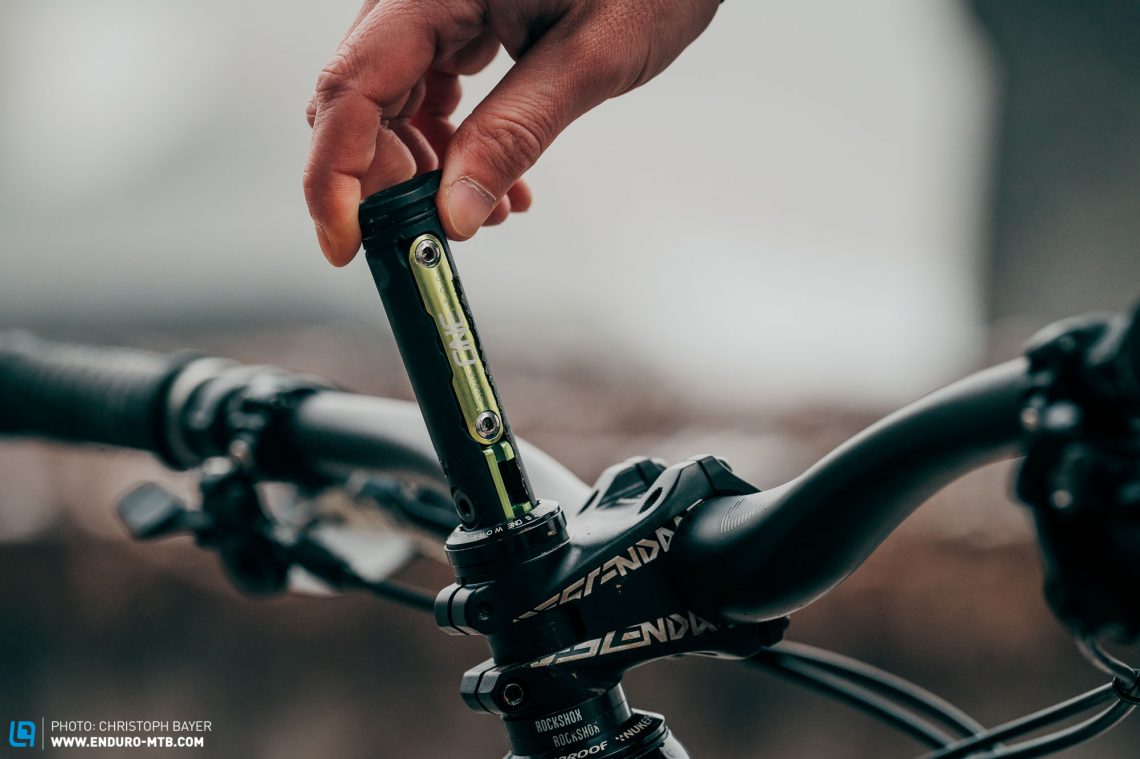



Wolf Tooth – Convenient mounting systems and cleverly integrated tools
With the B-RAD system, Wolf Tooth laid the foundation for stylish on-frame mounting systems. Instead of attaching your spare tube with tape, the B-RAD system allows you to strap it to a bolted on base. You can also use the mounting base to attach other bags and accessories in the B-RAD range. The B-RAD system is popular with bikepackers too, using it to stow even more necessities and drinks on the bike.
The EnCase system is new to Wolf Tooth and it’s used to stow tools in the handlebar ends. However, the system only works with open ended grips. Unfortunately, the inner diameter of many carbon handlebars is too small to accomodate the system. That said, the flexible design even allows it to be fitted in drop bars.
The Pack Pliers are another convenient product offered by Wolf Tooth. They function as chain link pliers, a valve core remover and a tire lever. Besides that, they also have storage space for two master links and a chainring bolt.


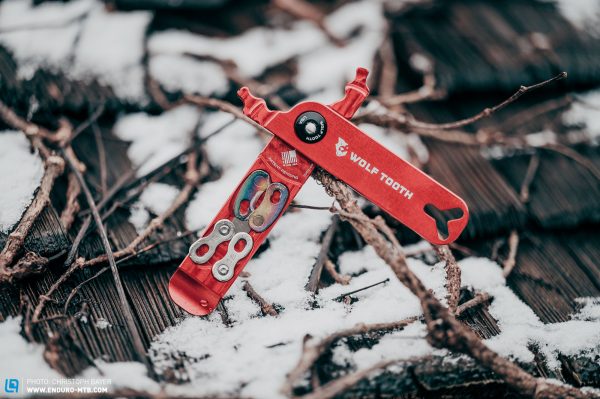
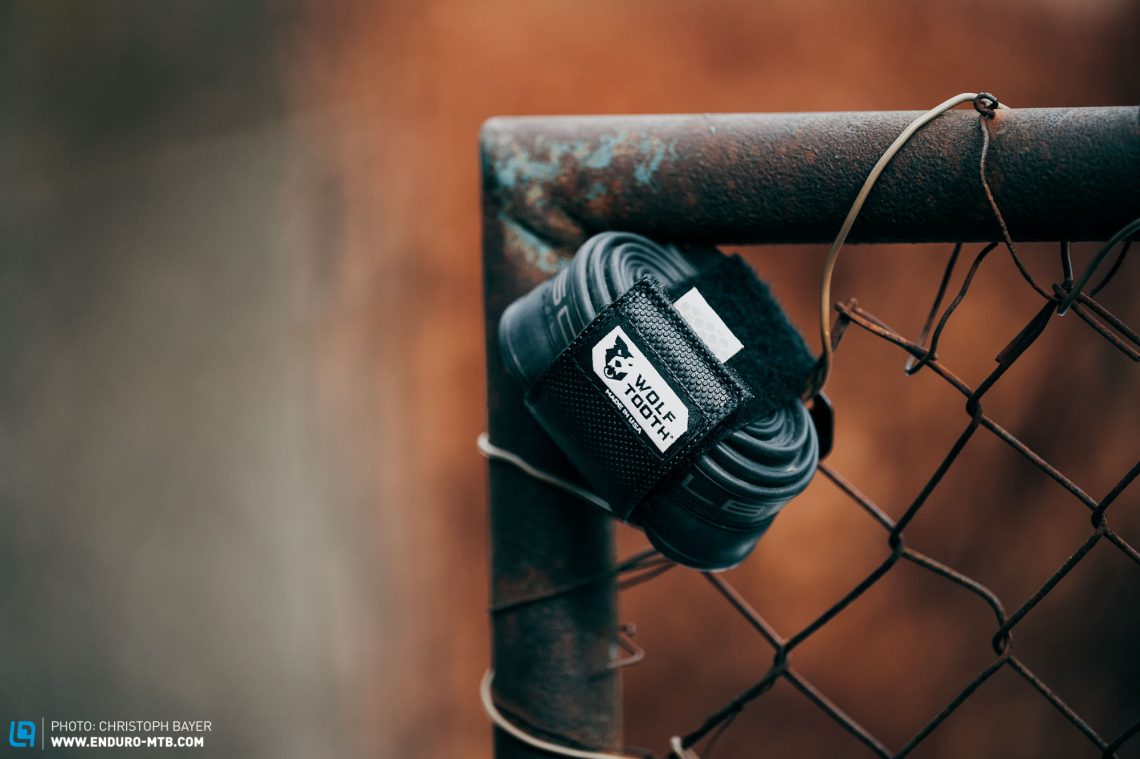
Specialized SWAT system
Specialized’s SWAT box has revolutionised frame design. The convenient storage space in the down tube has laid the foundation for saying goodbye to backpacks. However, the American brand also have a lot of other exciting products on offer that work universally on most bikes. Be it the Zee-Cage bottle cage with an integrated minitool or the ingenious SWAT Conceal Carry tool, which is built into the head tube and houses a minitool, a chain tool and master links. For those who wear bibs, we recommend the SWAT bib. Along with energy bars, you can use the pockets to store your keys, cell phone and other small items.



Bontrager BITS tool
The Bontrager BITS tool is the latest contender in the market for tools stowed in the steerer tube. You don’t need special tools or make changes to the fork or frame to fit it to your bike and the minitool can be accessed super quickly. In addition to the necessary Allen keys, the tool also includes a T25 torx key and a chain tool. With the help of spacers, it can be quickly and easily adjusted to the length of the steerer tube. In combination with a storage compartment in the frame, as can be found on the Trek Slash or Fuel Ex, you’ll have everything you need on board – brilliant.
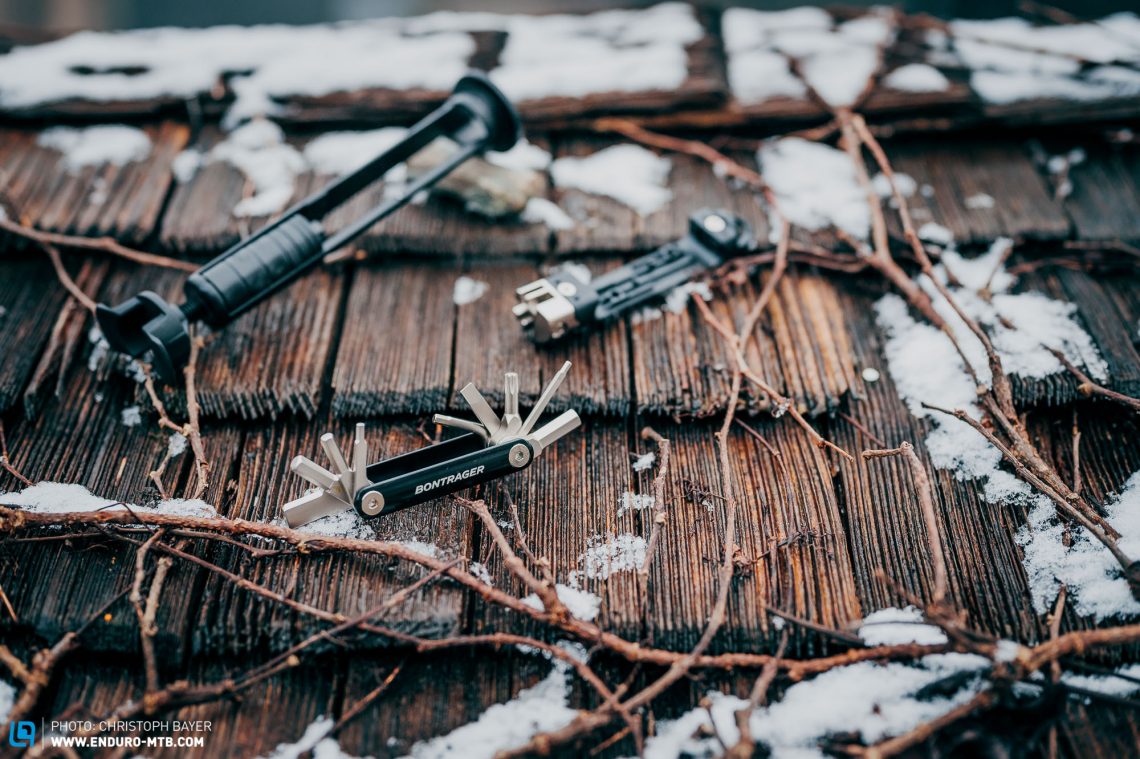
Granite Design – A whole range of smart products
Granite Design have several convenient products on offer. The STASH RCX Multi-Tool is one of our highlights. Since it uses an expander instead of a star nut, it’s compatible with sensitive carbon steerer tubes. Mountain bikers with regular suspension forks are free to use the standard STASH multitool instead. The STASH tire plug kit can be easily stowed in one of your handlebar ends. Additionally, we can recommend the ROCKBAND+ strap as a great solution for attaching a spare tube and CO2 cartridge to your frame. When visiting the Granite Design website, you might as well take a closer look at the STASH chain tool, the PITA pedal covers and the Punk CO2 inflator.

GIANT Clutch Tool System – Practical solutions from the bike giant
Very few people are aware of GIANT’s super practical solutions for stowing tools on the bike, hidden inside various cavities. You’ve got the Clutch tire plugs for the handlebar ends and the Clutch tool hidden inside the crank axle. The Clutch multitool is compatible with almost every hollow axle crankset and includes a chain tool and storage space for a master link. Unfortunately, a bolt on the tool came loose during our test, making it nearly impossible to remove. We recommend applying LOCTITE to the bolts beforehand. The Clutch strap will happily accommodate a spare tube, CO2 cartridges and tire levers.
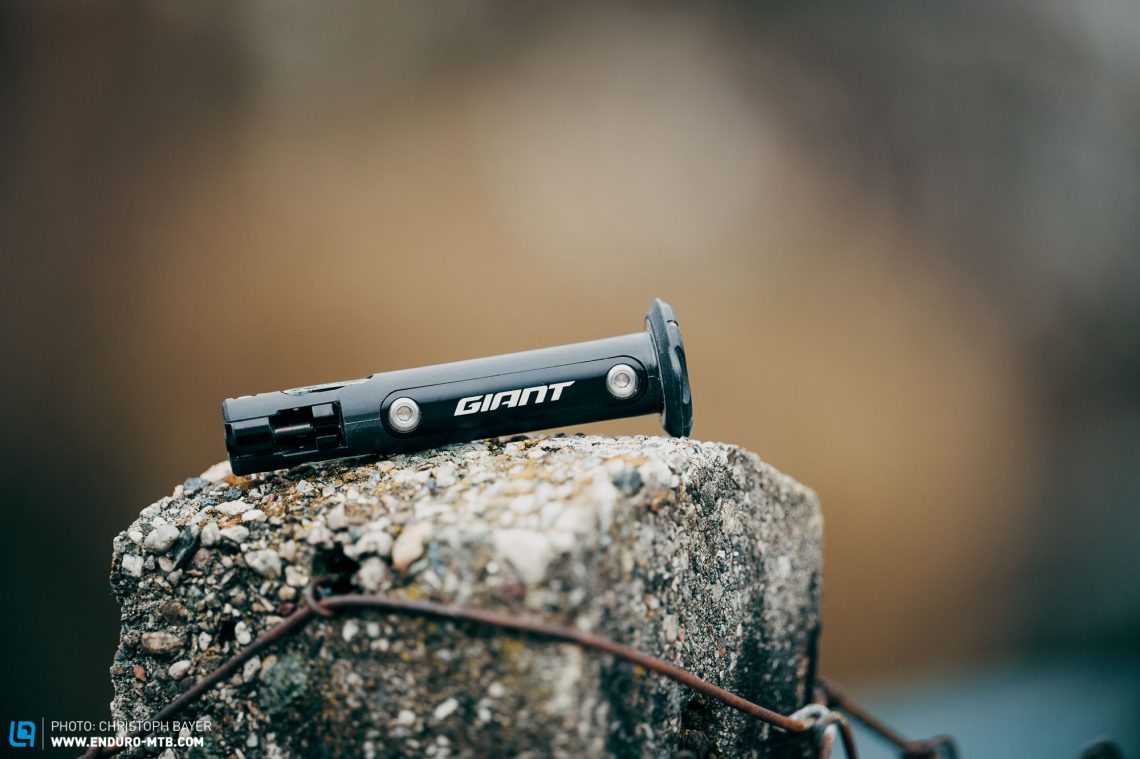
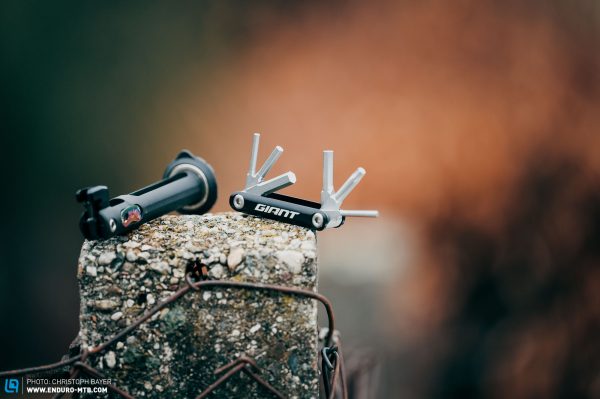


Backcountry Research Mutherload – Richie Rude’s strap of choice
The Backcountry Research Mutherload strap is probably the best-known model on the market. The Velcro strap has two loops inside which you can fit a spare tube as well as CO2 cartridges or a minitool. The whole thing then simply gets strapped to the frame. Thanks to non-slip rubber coating, it stays securely put. Simple, effective and high-quality.

Syncros – Practical, stylish bottle cages and much more.
Syncros have long been offering bottle cages that allow you to attach a multitool and a pump. The number of useful functions on the multitool has recently been improved. However, you still won’t find a 6 mm Allen key, which is something you should definitely keep in mind. The brand also have other exciting products on offer, such as a tool box that fits into any bottle cage or a tool roll for your bibs.

Fork Cork – Small but effective
The function of the Mountain Products Fork Cork is in its name. It plugs the bottom of the steerer tube, allowing you to store whatever you like inside it. It’s very quick to install and fits into any tapered steerer tube. However, you have to find your own solution to keep the contents from rattling. The Fork Cork is ideal for small items such as a shifter cable, cable ties, a master link, etc. We recommend wrapping everything in a small bag.
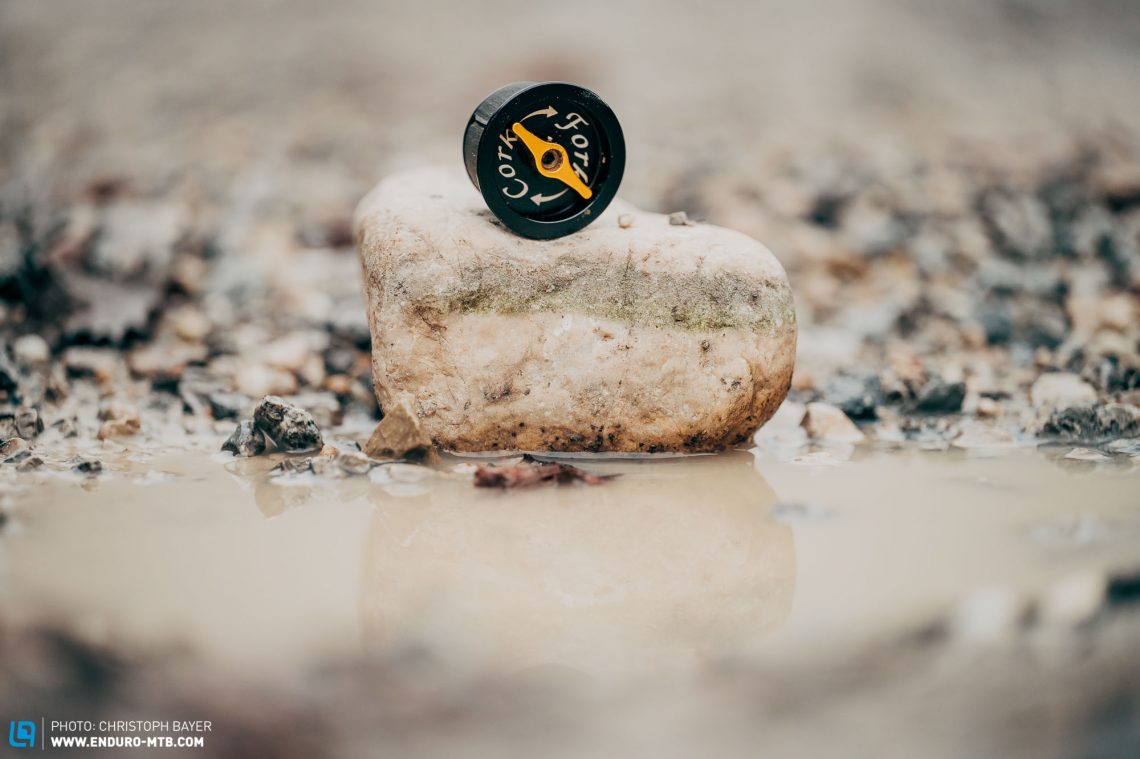
76 Projects Little Piggy – Practical mounts and bags
76 Projects is one of those little known brands that offer a lot of super convenient products. We particularly liked the Little Piggy bracket, which you can use to attach a spare tube to your bike even if you don’t have dedicated bosses in the frame. 76 Projects also offers practical bags that can be used in conjunction with the bracket, keeping the contents clean and dry while stored securely on the bike.

All In multitool – The third generation!
The All In multitool hit the scene like a bomb. Countless EWS professionals were using the tool in 2016. Unfortunately, new crank standards and the resulting change in diameters meant the tool would no longer fit. Fortunately, the Italian brand have reworked the design. It does require a bit of tinkering, but the All In V3 multitool is now compatible with SRAM DUB cranks. It features six bits that can be freely configured to suit the needs of your bike as well as a chain tool. According to the manufacturer, it can fix 99% of all defects. Provided that you can reach all the bolts.
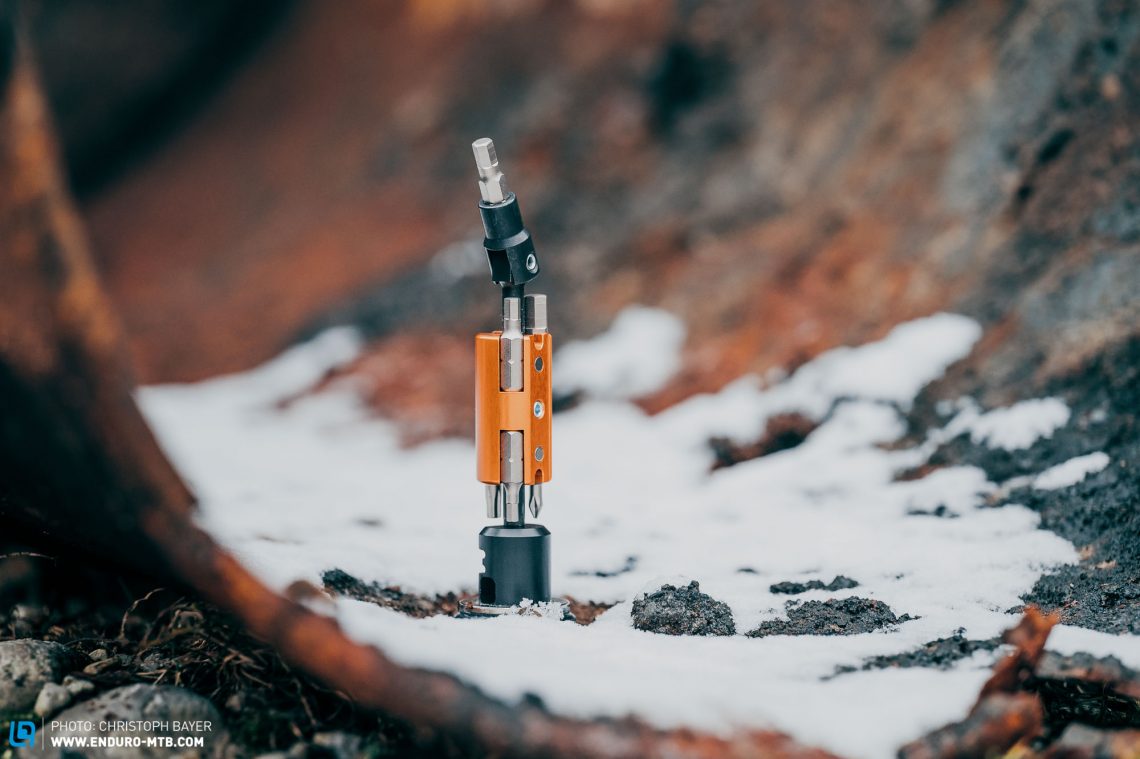
Topeak Ninja – Old, but gold
Topeak were one of the first brands to offer convenient on bike tool storage solutions. However, the tools seem very bulky and outdated by today’s standards. We’re sure that Topeak will soon be launching an updated model. So we’re not going dwell on it too much here.
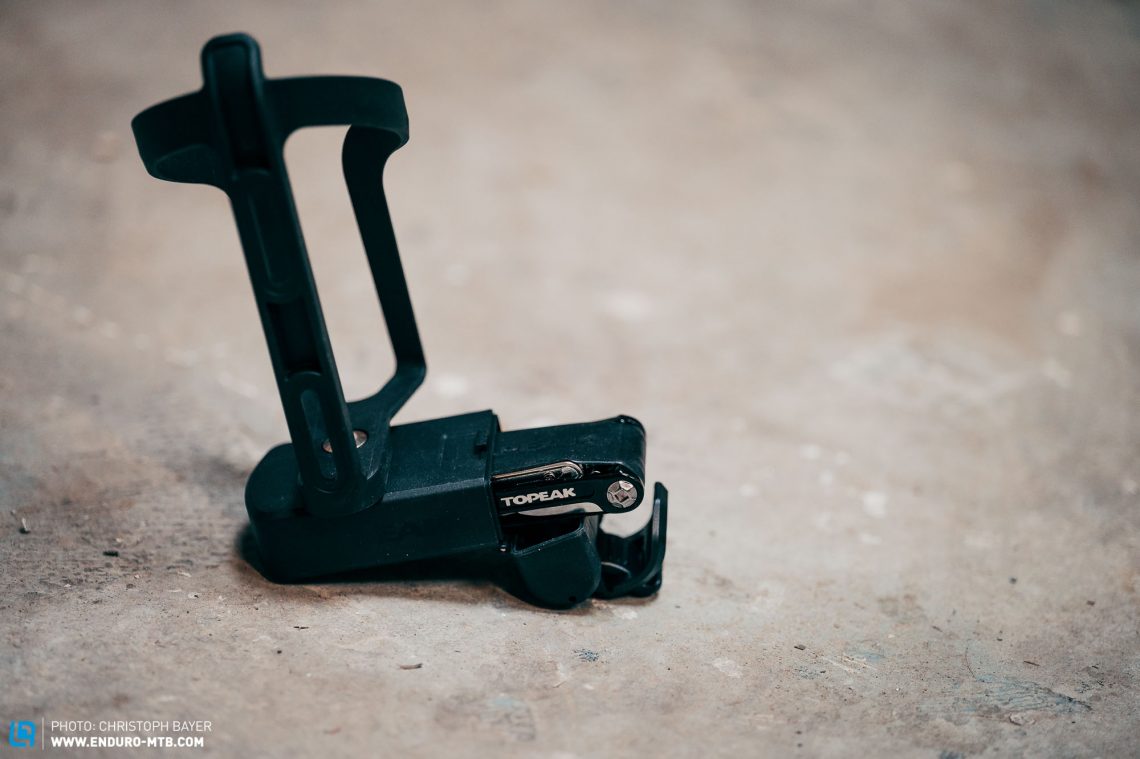
Fix Manufacturing – The minitool in your belt
Never heard of Fix Manufacturing? No wonder, the American brand are yet to make a name for themselves in the bike sector. What sets them apart from the other solutions is that they store the tool on the rider’s body instead of the bike, hiding it inside the belt buckle. There are various tools and belt options available and you’re sure to find a solution that suits your needs. Both Aaron Gwin and Hans Rey rely on Fix Manufacturing for their trailside tools. They’ve even launched a special Dynaplug/Hans Rey edition including a Dynaplug tire repair set.
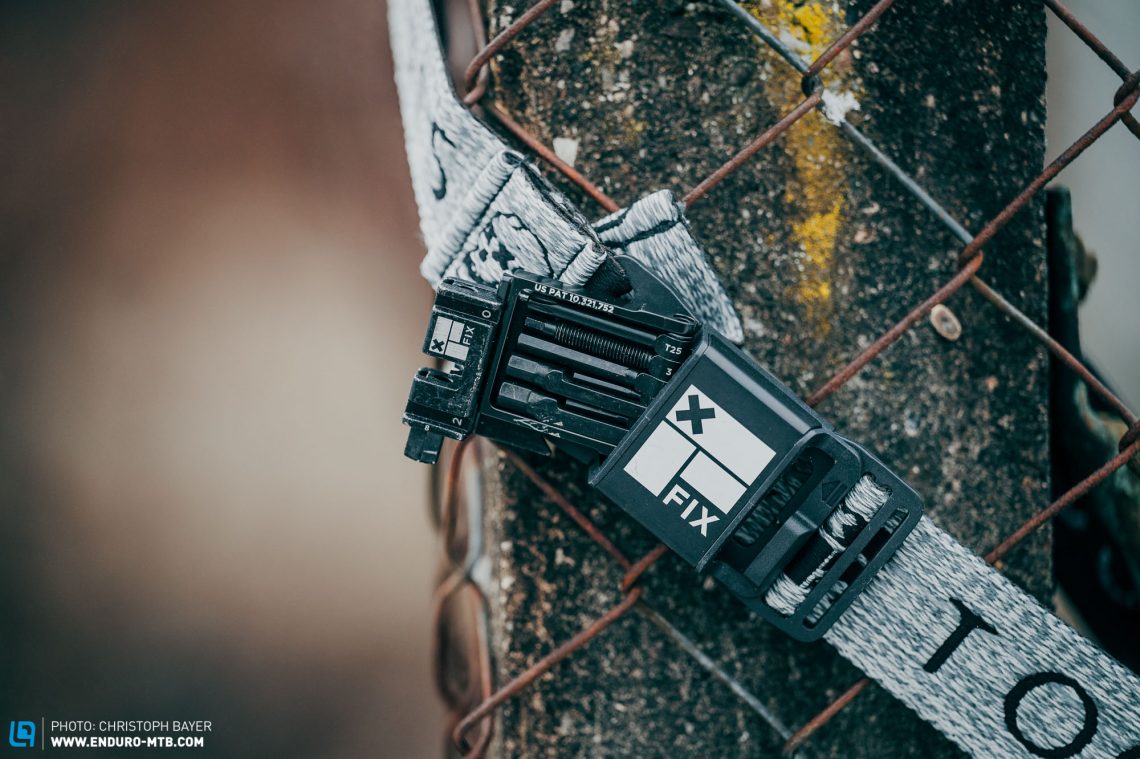
What about tire plugs?
The range of tubeless tire repair kits on the market has grown tremendously. The right model for you depends on where you want to stow it. We compared several different models in our group test to find out which ones are the best. For those who use grips with closed ends, we can recommend the GIANT Clutch tire tool or the Sahmurai S.W.O.R.D. But those who rely on a Wolf Tooth or 76 Projects bag attached to the top tube could be happiest with the Dynaplug Racer. There are countless solutions available and it’s up to you to choose the one that’s right for you.
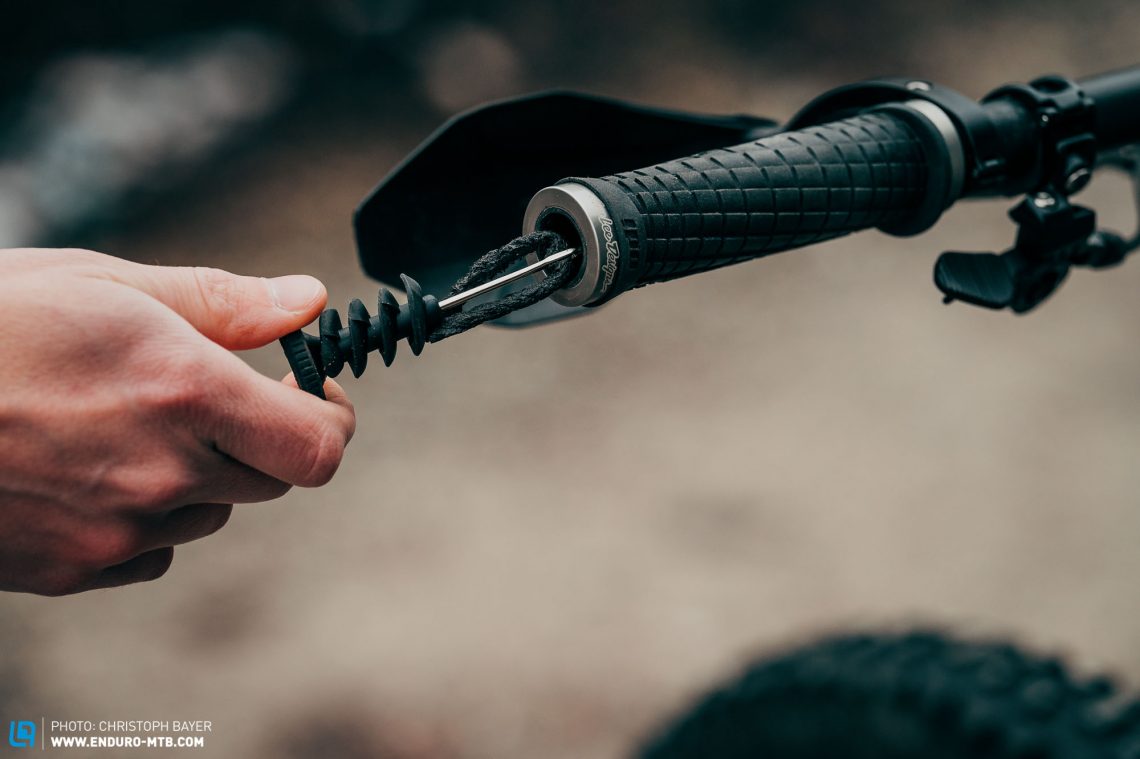
So many tools, but which solution is the best?
Ultimately, the best solution for you depends on your preferences and bike. If you already have a storage compartment in the frame, you can get away with installing a tool in the head tube. However, if your frame doesn’t even have bottle cage bosses, you won’t get off that easily. We recommend checking out the tools presented above, inspecting your bike to see which mounting options you have, and then putting together your perfect setup.
Our preferred setup is the OneUp EDC, Bontrager BITS or Specialized Conceal Carry tool in combination with a strap (or base plate) and tire plug tools in the handlebar ends. You’ll have to try it out for yourself to see whether this setup works for you.

Did you enjoy this article? If so, we would be stoked if you decide to support us with a monthly contribution. By becoming a supporter of ENDURO, you will help secure a sustainable future for high-quality mountain bike journalism. Click here to learn more.
Words: Photos: Diverse




